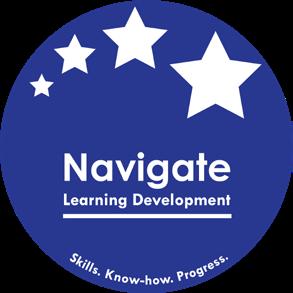
5 minute read
BUILD YOUR EXAM STRATEGY
from EXPLICIT 8
by explicit
As you prepare for what may be your first in-person exams for a while, you may find it helpful to consider how best to use your time on the day of your exam. Read on for some practical tips on getting prepared so that you’re well placed to sit your exams with confidence.
Practicalities
Advertisement
You will recently have received your exam timetable. Since you may not have taken an exam on campus for a while (or perhaps ever!), it would be a good idea to take some time to visit your exam venues before the exam session starts. Doing this will ensure that you won’t lose time looking for the hall or room on the day. It may also be worth checking out how best to travel to the venue on the day of your exam so you can be sure that you can arrive in plenty of time.
What’s different about in-person exams?
You usually can’t bring notes and resources to the inperson exam with you, and there will be a time limit, so exams can seem a little unpredictable. However, even though the exam situation is different to continuous assessment, there are still plenty of things you can prepare for so that you know what to expect from your exam. For instance, by analysing past exam papers (which you can find at exampapers.cit.ie) and making use of your lecturers’ advice, you can plan: • how best to allocate your time in the exam. You can do this by determining how many marks are available per section / question, etc. • which questions to do first, second, and last, etc., based on which topics you feel most confident with. • how to answer different types of questions (multiple choice, short answer or essay-style, for example).

Allocating time to individual questions
In the example above, Section A contains 10 questions worth 5 marks each, and section B contains two questions worth 25 marks each. Using the same principles we applied to section timings, we can also estimate how long we should give to each question.
A closer look at timing

Since exam time is limited, it makes sense to consider how much time you should ideally devote to each section or question of the exam. Referring to a selection of past exam papers from the relevant module, you may find it useful to consider the following: 1. How much time is available for the exam in total? 2. How much of this time do you need to read instructions and qs? 3. How much for checking and proofreading (realistically)? 4. How many marks are available in total? 5. How many marks are available for each section? What portion of the overall marks does this make up? 6. Based on the above, how much time should I dedicate to each section? Let’s take an example: imagine that you’re completing a two-hour exam with two sections. Each section is worth 50 marks. Section A has 10 questions worth 5 marks each which must all be answered. Section B has three questions, each worth 25 marks, and you must choose and answer two of these three questions. In this case: 1. Two hours – or 120 minutes – are available in total. 2. I estimate that I will need 10 minutes to carefully read instructions and questions and to brainstorm some ideas. 3. I plan to allow 10 minutes for checking and completing any questions I didn’t quite finish. 4. 100 marks are available in total. 5. Section A and Section B are each worth 50 marks (half of the total), so each section should be given half of the available time. 6. plan to use 10 minutes for reading and planning and 10 for checking, therefore I have 120-10-10 = 100 minutes available for writing answers. Each section will require half of the available writing time, therefore, I’ll spend 50 minutes writing answers to each section. While there is always a little flexibility, it’s usually best to stick to your planned timings as closely as possible to ensure you accrue as many marks as you can from each section of the paper.
Managing your exam: exam hall tips
Now that you’ve made a plan, you know how much time you have to complete the exam, how much of that time is available for writing answers and how much of this time needs to be allocated to each section / question. In order to keep track of this, you may find it helpful to quickly note your time plan at the back of your answer book, or even beside each question on the exam question paper. There will be a clock in the


exam hall, but you might find it easier to keep track of time by bringing a watch with you (note, though, that no smart watches will be allowed in the hall). As you’re working through the exam, you may find that one particular question may not work out for you on the first attempt. If this should happen, you may prefer to stick to your time plan and move on rather than losing time on trying to work out that tricky question. You could, however, have time to come back to this question before the exam ends, so please make sure to leave plenty of blank space after it so that you can easily and quickly revisit it. Sometimes, you may get the ‘first draft’ of your questions finished more quickly than you had envisaged. If this happens, you could be tempted to leave the exam early. As we have already seen, though, additional time before the end of the exam can be extremely valuable and you could have that flash of inspiration that helps you to finish or improve an answer. By staying until the end of the exam, you give yourself the best possible opportunity to keep adding marks, so it really is in your interest to use all of the available time.
Everyone at AnSEO – the Student Engagement Office wishes you all the very best of luck with your upcoming exams and assessments!







